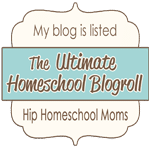Free Bill of Rights and Preamble Printable
Time Saver: Order a ready to use Preamble and Bill of Rights here.
1
"The mark of an educated mind is to be able to entertain a thought without accepting it." ~Aristotle
Studying primary sources first establishes a knowledge base rooted in the facts. A personal perspective can then be formed, and secondary sources strategically introduced.
2
"An army of principles can penetrate where an army of soldiers cannot." ~Thomas Paine
Not only must we learn the principles, but the context in which those principles were formed. Studying a primary source means we study people, places, and events connected to it.
3
"The Bible must be considered as the great source of all truth which men are to be guided in government as well as in all social transactions." ~Noah Webster
Principles and truth are inseparable, and both are found within primary sources.
2 More Reasons...
- Collecting and using primary sources simplifies our curriculum, as well as our home library.
- Primary sources are universal tools spanning across subjects and forming a connection between them.
Examples of Primary Sources
- Documents (Declaration of Independence, Articles of Confederation, the U.S. Constitution)
- Bible
- Artifacts
- Maps
- People (Meeting & Interviewing, Journals, Recordings)
- Nature
Class Discussion
What are your favorite primary sources?
Happy Homeschooling!
Mrs. Redd

